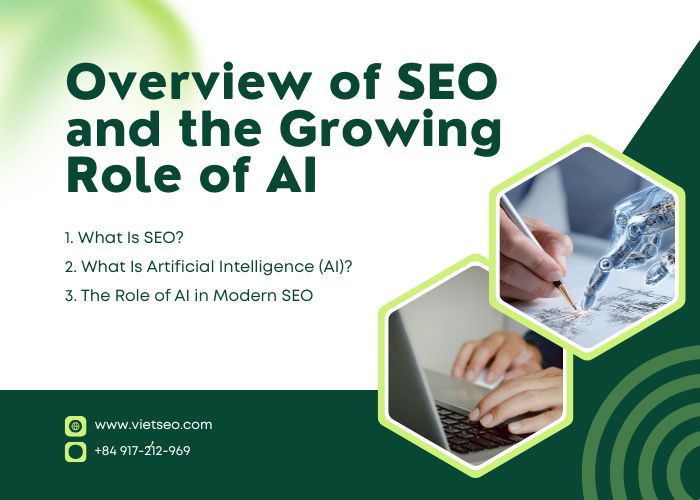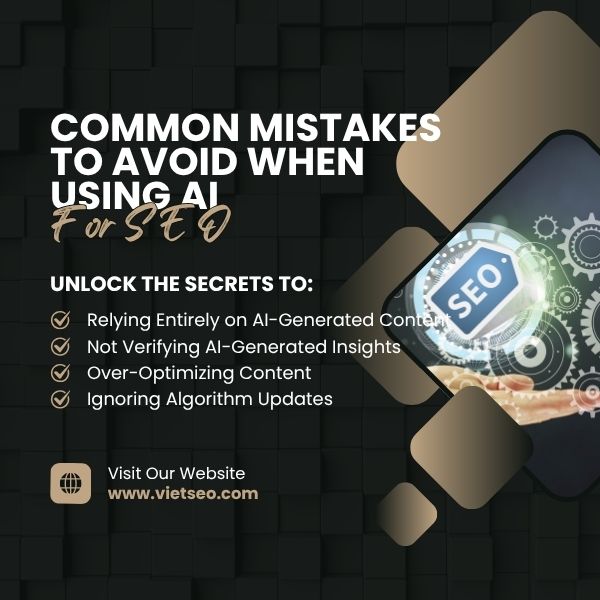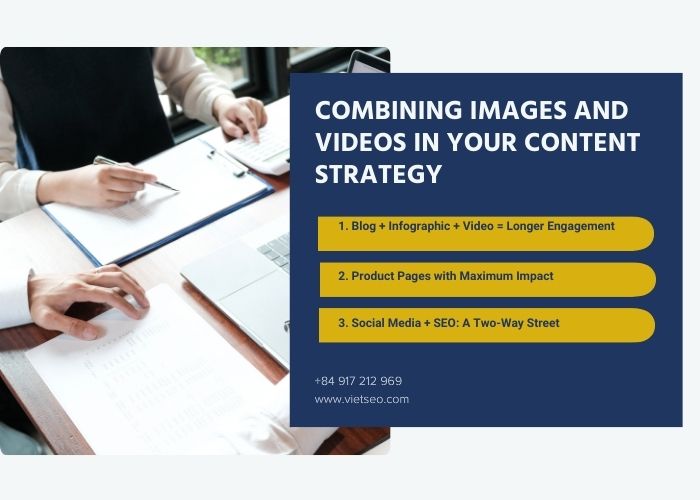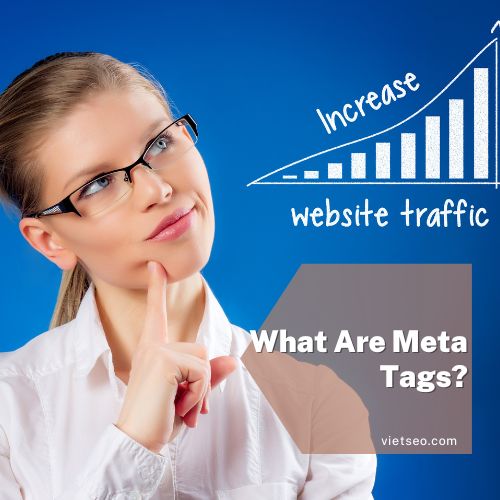SEO and AI: A Unified Workflow Between Humans and Machines
How can we effectively integrate human effort and AI in the SEO process?
How do we create a unified SEO strategy where AI serves as a powerful assistant rather than a complete replacement for human input? This article will help you understand the evolving relationship between SEO and AI, and propose a modern, optimized SEO workflow that combines the strengths of both humans and machines.
Overview of SEO and the Growing Role of AI
Search Engine Optimization (SEO) has always been one of the most important pillars of online marketing. It helps businesses improve their visibility on search engines, attract more visitors, and reach the right audience organically—without relying solely on paid ads. However, as digital competition intensifies and artificial intelligence (AI) technology continues to advance, SEO itself is evolving at a remarkable pace.
At Viet SEO, we believe that the future of SEO lies in the synergy between human creativity and AI-powered precision. By combining human insight with data-driven automation, businesses can stay ahead of search engine changes, better understand user intent, and create content that truly resonates with their audience.
1. What Is SEO?
SEO (Search Engine Optimization) refers to the process of optimizing a website so that it appears higher in the search results on platforms like Google, Bing, or Cốc Cốc. The ultimate goal is to increase organic traffic—visitors who find your site naturally through search results, rather than paid ads.
In simpler terms, SEO helps search engines understand what your website is about and why it deserves to be shown to users searching for related information. The better your SEO, the easier it is for potential customers to discover your brand online.
SEO involves multiple interconnected components, each serving a unique purpose:
- On-page SEO: Focuses on elements directly within your website, such as optimizing titles, headings, meta tags, URLs, internal links, and loading speed.
- Off-page SEO: Builds your website’s reputation through high-quality backlinks, brand mentions, and external marketing efforts.
- Technical SEO: Improves the behind-the-scenes structure of your site—such as crawlability, XML sitemaps, HTTPS security, and structured data—to ensure search engines can easily index it.
- Content SEO: Creates valuable, relevant, and keyword-optimized content that both search engines and users find useful.
Understanding what SEO is—and how each part works—allows you to create a comprehensive strategy that drives sustainable visibility and long-term growth.
2. What Is Artificial Intelligence (AI)?
Artificial Intelligence (AI) is a field of technology that enables machines to perform tasks that typically require human intelligence, such as understanding language, recognizing patterns, and making predictions.
In the context of SEO, AI is not just a buzzword—it’s a powerful tool that transforms how we analyze data and make decisions. By processing massive amounts of information in seconds, AI can:
- Analyze big data efficiently: AI tools can scan millions of search results, pages, and keywords to uncover patterns that would take humans days or even weeks to find.
- Suggest smarter keywords: AI systems can identify keyword opportunities based on real-time trends, search intent, and user demographics.
- Predict emerging search trends: By analyzing user behavior and market signals, AI helps you adapt your SEO strategy ahead of time.
- Generate and optimize content automatically: AI-powered tools can create outlines, suggest headings, and even write drafts that humans can refine.
- Understand user behavior: Through data analysis, AI can reveal how users interact with your website—helping you improve engagement and conversions.
3. The Role of AI in Modern SEO
AI is reshaping SEO in ways that go far beyond automation. It’s creating a smarter, more adaptive approach to optimization that aligns closely with how search engines like Google now operate—using machine learning and natural language processing to deliver better search results.
Here are three major ways AI is influencing modern SEO:
- Automation and Efficiency
AI can take over repetitive, time-consuming tasks such as keyword research, competitor analysis, and performance tracking. This allows marketers and SEO experts to focus more on strategy, creativity, and decision-making—areas where human judgment still matters most.
- User Behavior Prediction
With machine learning, AI can identify subtle user behavior patterns—what they click on, how long they stay, and what type of content they engage with most. This insight enables businesses to create more personalized and user-friendly websites, improving overall experience and satisfaction.
- Data-Driven, Market-Aligned Content Creation
AI analyzes search data, user intent, and market trends to guide content creators toward the right topics and formats. Instead of guessing what works, you can use AI insights to produce content that truly matches what your audience is searching for—resulting in better rankings and higher engagement.
In short, the integration of AI in SEO isn’t replacing human expertise—it’s enhancing it. By combining human creativity with machine intelligence, companies like Viet SEO are redefining how optimization works: faster, smarter, and more aligned with both user needs and search engine algorithms.
Would you like me to continue rewriting the next section (“The Benefits of Combining SEO and AI – From Viet SEO’s Perspective”) in the same tone and style?
The Benefits of Combining SEO and AI – From Viet SEO’s Perspective
Bringing together SEO and Artificial Intelligence marks a major leap forward in how businesses approach digital marketing. AI doesn’t replace SEO professionals—it amplifies their capabilities, helping them make smarter, faster, and more data-driven decisions.
At Viet SEO, we’ve seen firsthand how integrating AI tools into an SEO strategy can drastically improve performance, from keyword targeting to user engagement. The combination of human expertise and AI precision allows us to achieve results that are not only measurable but also sustainable over the long term.
Below are the key advantages of this powerful partnership.
1. Smart Content Optimization
One of the most time-consuming aspects of SEO is researching keywords and crafting well-structured content that can outperform competitors. With AI-powered platforms such as SurferSEO, Frase, and Jasper AI, this process becomes much more efficient and accurate.
These tools analyze top-ranking pages across search engines to identify:
- Which keywords are driving visibility
- How competitors structure their headings, paragraphs, and meta tags
- What type of content depth and tone is most effective in your niche
Instead of guessing what works, AI helps you build content backed by data—ensuring that every article is aligned with both user intent and Google’s ranking algorithms.
At Viet SEO, we combine this data with the human touch—professional writers, editors, and strategists who refine the content to make it authentic, engaging, and aligned with your brand voice.
2. Advanced Data Analysis
Traditional SEO tools provide surface-level insights, but AI-driven analytics go much deeper. Artificial intelligence allows SEO specialists to process massive amounts of data and uncover patterns that would otherwise go unnoticed.
Through AI, we can:
- Identify what people are searching for, when, and from where
- Segment audiences based on behavior, intent, and demographics
- Detect emerging trends before competitors notice them
For instance, AI can track shifts in search demand—like rising interest in specific products or seasonal keywords—allowing businesses to adjust their SEO campaigns proactively. At Viet SEO, this helps our clients stay one step ahead of the market, targeting opportunities the moment they appear.
3. Personalized User Experience
Modern SEO isn’t just about rankings—it’s about delivering meaningful experiences. AI enables websites to learn from user behavior and tailor the browsing journey in real time.
By analyzing click paths, dwell time, and content engagement, AI systems can recommend related articles, products, or services that match each visitor’s interests. This leads to:
- Longer session durations (users spend more time exploring your site)
- Lower bounce rates (visitors don’t leave immediately)
- Higher conversion rates (users are shown exactly what they’re looking for)
These behavioral improvements are not only good for engagement—they’re also critical ranking signals for Google. At Viet SEO, we leverage AI to personalize content recommendations and guide users toward the most relevant information, turning casual visits into lasting relationships.
4. Time and Cost Savings
For many businesses—especially small and medium enterprises—building a large in-house SEO team can be costly and inefficient. AI helps bridge that gap by automating repetitive tasks such as:
- Keyword clustering and analysis
- SEO audits and reporting
- Internal linking and metadata optimization
This doesn’t mean AI replaces humans—it means your team can focus on creative strategy, branding, and business growth instead of spending hours on manual work.
By using AI as an intelligent assistant, Viet SEO helps businesses reduce operational costs while maintaining a professional, data-driven SEO workflow that scales efficiently.
In essence, combining SEO and AI gives you the best of both worlds—human strategy and machine intelligence. The result is smarter decision-making, more precise targeting, and faster progress toward your business goals.
A Unified SEO Workflow Between Humans and Machines
To get the best results from the partnership between human expertise and Artificial Intelligence, you need a clear, structured workflow—one that defines where automation adds value and where human strategy leads the way.
At Viet SEO, we’ve developed a modern, AI-assisted SEO process that merges data intelligence with human insight. This combination ensures every action—from keyword research to content creation and technical optimization—is both strategic and effective.
Below are the six essential steps in this unified human-AI SEO workflow.
Step 1: Market Research and Analysis (AI-Assisted)
Before any campaign begins, a deep understanding of the market landscape is critical. AI can speed up this process dramatically.
- How AI helps: Tools like Ahrefs, SEMrush, and Google Trends can automatically analyze thousands of keywords, competitor websites, and search trends in your industry. They highlight which competitors are dominating search results, what content formats perform best, and where new opportunities exist.
- The human role: While AI provides the data, humans interpret it. SEO specialists and strategists use these insights to define business goals, identify brand positioning, and understand target audiences more deeply.
Result: A solid foundation for your SEO strategy, backed by both data and human context.
Step 2: Strategic Keyword Research (Human + AI Collaboration)
Keyword research is no longer just about volume—it’s about intent and opportunity.
- AI’s contribution: AI tools can scan search data in real time to uncover long-tail keywords, seasonal trends, and question-based phrases that users are actually typing into search engines.
- The human contribution: Experts then evaluate and prioritize these keywords based on campaign goals, target personas, and conversion potential.
Pro tip: Combine high-volume keywords (for visibility) with high-intent, niche keywords (for conversions). This balance helps attract both awareness and sales-ready visitors.
Step 3: Content Structure & Outline Creation (AI-Assisted)
Once you know what to write about, the next challenge is structuring your content effectively.
- How AI helps: Platforms such as Frase.io, SurferSEO, and Writesonic analyze top-ranking pages and suggest SEO-optimized outlines, headings, and semantic keywords that improve your content’s chance of ranking.
- The human role: Content strategists and editors fine-tune these outlines, ensuring they align with your brand’s tone, messaging, and audience expectations.
This step blends science and storytelling—AI ensures technical precision, while humans ensure emotional connection.
Step 4: Content Writing and Editing (Human-Centered)
This is where creativity takes center stage.
- AI’s role: AI writing tools can generate a first draft or suggest ways to improve readability, structure, and keyword density.
- Human role: Skilled writers then refine these drafts—adding natural flow, emotional appeal, real-world insights, and brand personality. They make the content sound like it’s written by humans for humans.
Important note: No matter how advanced AI becomes, it still lacks genuine empathy, storytelling ability, and cultural nuance. That’s why at Viet SEO, the final editing process always belongs to human experts.
Step 5: Technical and On-Page Optimization (AI-Driven)
Behind every great SEO strategy lies strong technical performance. AI can handle much of the heavy lifting here.
- How AI helps: Tools like Rank Math, Yoast SEO, and Screaming Frog automatically audit your website for broken links, slow loading pages, missing metadata, or duplicate content. They can also recommend improvements for title tags, image alt texts, and internal links.
- The human role: SEO specialists validate these automated changes, ensuring they fit the overall content strategy and brand message.
End goal: A technically sound, user-friendly website that both Google and your visitors love.
Step 6: Monitoring, Measurement, and Continuous Improvement (AI Keeps Learning)
SEO doesn’t stop after content is published—it’s an ongoing process of refinement.
- How AI helps: By analyzing real-time data from Google Analytics and Google Search Console, AI can detect performance patterns, identify ranking drops, and suggest specific actions—like updating old articles or shifting focus to better-performing keywords.
- The human role: SEO managers and strategists interpret these insights, making high-level decisions about future campaigns, link-building priorities, and content direction.
The result: A continuously improving SEO strategy that adapts to algorithm updates and changing user behavior.
In essence
The most effective SEO strategies today are not fully automated, nor are they entirely manual. The real power lies in collaboration—where machines handle data and patterns, and humans bring creativity, empathy, and strategic thinking.
At Viet SEO, we embrace this partnership to create SEO campaigns that are not only efficient and scalable, but also deeply human in how they connect with audiences.
Common Mistakes to Avoid When Using AI for SEO
Artificial Intelligence has brought incredible efficiency and precision to modern SEO, but it’s important to remember that AI is a tool, not a replacement for human strategy. When used without proper oversight, it can lead to errors that hurt your rankings instead of helping them.
At Viet SEO, we’ve seen how businesses sometimes misuse AI—often unintentionally—by over-automating or trusting machine-generated outputs without human review. Below are the most common mistakes to watch out for and how to avoid them.
1. Relying Entirely on AI-Generated Content
AI tools can produce articles, blogs, and product descriptions in seconds—but that doesn’t mean the results are always suitable for publishing.
Without human editing, AI-generated content often lacks emotional depth, originality, and brand personality. It can sound robotic or repetitive and may even include factual inaccuracies.
More importantly, Google’s E-E-A-T guidelines (Experience, Expertise, Authoritativeness, and Trustworthiness) prioritize human insight and real-world experience. Overusing AI-written text without human input can lead to poor engagement or even lower rankings.
Viet SEO’s advice: Use AI as a writing assistant, not as a replacement. Let AI handle research and structure, but rely on skilled writers and editors to add storytelling, authenticity, and expert credibility.
2. Not Verifying AI-Generated Insights
AI tools like ChatGPT, SurferSEO, or Jasper AI can analyze global data—but that doesn’t mean their recommendations always fit your specific market, industry, or region.
For example, an AI tool trained on global search patterns might recommend keywords that perform well in the U.S. but have low search volume or different intent in Vietnam. Blindly applying those insights could waste your resources.
Viet SEO’s advice: Always cross-check AI data with local SEO research using tools like Google Keyword Planner (set to your region), Cốc Cốc Keyword Tool, or localized trend analysis. Combine AI intelligence with human understanding of local culture and audience behavior.
3. Over-Optimizing Content
AI tools excel at keyword density analysis—but sometimes, they push optimization too far.
Adding too many keywords or forcing internal links where they don’t naturally belong can make your content sound unnatural and even trigger Google penalties for keyword stuffing or manipulative SEO practices.
Viet SEO’s advice: Follow a “user-first” SEO philosophy. Use keywords naturally within valuable, well-written content. Remember: Google’s algorithms are designed to reward helpful information—not over-optimized pages.
4. Ignoring Algorithm Updates
AI models and SEO tools rely on the data they’ve been trained on. If they’re not regularly updated, their insights can quickly become outdated—especially since Google frequently rolls out new core updates and adjustments to how it evaluates content.
Using an AI system that doesn’t account for these changes can cause you to chase outdated SEO tactics or miss critical ranking signals.
Viet SEO’s advice: Stay informed about Google’s latest updates and industry trends. Refresh your AI tools, data sources, and SEO strategies regularly. Human oversight ensures your optimization remains relevant and compliant.
In essence
AI is a game-changer for SEO—but only when used wisely. The best results come from a balanced partnership between automation and human expertise.
At Viet SEO, we encourage businesses to embrace AI as a smart assistant that speeds up research and execution—while keeping strategy, creativity, and judgment firmly in human hands.
Would you like me to continue with the final section — “The Future of SEO: When Humans and Machines Collaborate” — written in the same professional and natural tone?
The Future of SEO: When Humans and Machines Co-evolve
As we move deeper into the age of artificial intelligence, one thing becomes clear: AI will not replace SEO professionals—it will empower them. The true future of SEO lies not in machines taking over human roles, but in humans and machines learning, adapting, and growing together.
While AI can process vast amounts of data, detect patterns, and make lightning-fast predictions, it lacks intuition, creativity, and emotional understanding—qualities that define effective communication and brand storytelling. That’s why the most successful SEO strategies of the future will be built on collaboration, not competition, between humans and technology.
At Viet SEO, we envision a future where AI becomes the perfect partner for marketers—an assistant that automates analysis and insight generation, freeing humans to focus on strategy, innovation, and meaningful user experiences.
Emerging Trends to Watch
1. UX-First SEO (User Experience–Centered Optimization)
Search engines are increasingly prioritizing user satisfaction as a ranking factor. AI helps track how users interact with websites—where they click, how long they stay, and what they ignore.
Meanwhile, human designers and strategists use this data to craft smoother, faster, and more intuitive experiences. The result is SEO that goes beyond keywords and rankings to deliver true value to the visitor.
2. Voice Search Optimization
With the rise of smart assistants like Siri, Alexa, and Google Assistant, voice search is changing how people look for information. Queries are becoming longer, more conversational, and question-based.
AI tools can analyze these natural-language patterns, while SEO experts adjust content to match how people actually speak—not just how they type.
3. Visual Search Optimization
Thanks to tools like Google Lens and Pinterest Lens, users can now search using images instead of words. Visual SEO means optimizing alt text, image titles, and structured data so search engines can “understand” what your visuals represent.
AI enhances this process by recognizing objects, colors, and contexts, while human creatives ensure the visuals remain appealing, on-brand, and emotionally resonant.
4. Real-Time, AI-Powered SEO (Hyper-Personalization at Scale)
In the near future, AI will enable real-time optimization, where website elements—like headlines, product suggestions, or CTAs—adjust dynamically based on user behavior and intent.
This hyper-personalized approach allows every visitor to experience a version of the site tailored specifically to them. Human marketers, meanwhile, set the strategy, tone, and ethical guidelines to ensure personalization remains helpful, not intrusive.
In short
The evolution of SEO isn’t about machines overtaking humans—it’s about co-evolution. As AI becomes more intelligent and data-driven, humans become more creative and strategic. Together, they form the next generation of SEO: faster, smarter, and more human-focused than ever before.
At Viet SEO, we’re not waiting for that future—we’re building it today, combining the best of human expertise and artificial intelligence to create SEO solutions that lead the way.
Conclusion
SEO today is no longer a contest between humans and algorithms—it’s a partnership. When used wisely, AI becomes a powerful ally, helping businesses work smarter, faster, and more strategically.
At Viet SEO, we believe that the true strength of modern SEO lies in the harmony between human intelligence and artificial intelligence. By combining the analytical speed of machines with the creativity and intuition of people, we can:
- Work more efficiently, eliminating repetitive tasks and freeing up time for strategy.
- Make smarter decisions, powered by data and guided by human judgment.
- Optimize content faster, based on real-time insights and search intent.
- Understand users more deeply, creating experiences that genuinely connect.
But no matter how advanced AI becomes, it’s still just a tool. The real success of SEO depends on balance—where technology amplifies human vision, not replaces it.
A synchronized workflow between humans and machines doesn’t just help your website reach the top of Google—it ensures you stay there, sustainably, ethically, and effectively.
At Viet SEO, this is the future we’re building: one where innovation and authenticity go hand in hand, driving long-term growth in the ever-changing digital landscape.




